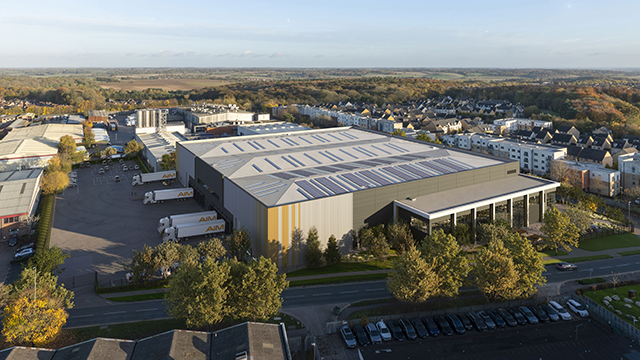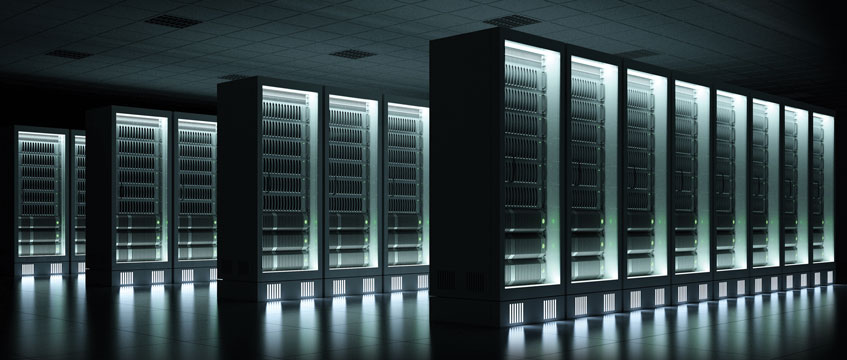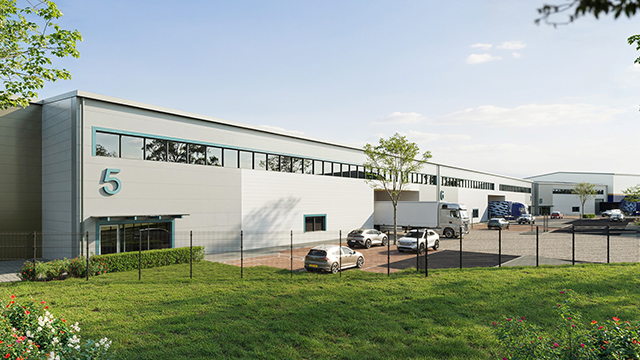From a surge in crackly group video calls with colleagues to weekly family Zoom quizzes and from ordering everything online to being roped into your child’s latest TikTok video antics, our lives have become governed by technology over the past four months.
We have had to transition from the real world into a partially virtual substitute. Digital connectivity has become a survival tool for businesses across the globe. It is also the only means through which many of us can see our loved ones. No matter how hard we all work to collectively find our way back to a semblance of normality there can be no denying that the Covid-19 pandemic will prove more than just a moment in time. It has changed the way we think, the way we work, and the way we live. And our reliance on technology looks set to remain permanently elevated as a result.
Where there is a surge in data use on this scale, it follows that there will be an increased demand for space to store said data. Indeed, the demand for data centre space has exploded during the lockdown period. As EG revealed earlier this month, the number of data centre plans lodged since the government enforced lockdown on 23 March totals over 2.27m sq ft of space. This means that more data centre space was lodged in roughly three months than in the whole of 2019, which saw over 2.05m sq ft of plans submitted. “The demand for these services is still growing,” says Research Institutes of Sweden’s scientific lead and data centre expert Jon Summers. “Therefore the energy consumption of data centre sectors has to increase.”
Across the globe, investment into the asset class is heating up. According to financial services firm M Capital Group, the data centre industry is expected to grow by 10-15% over the next five years, and the value of data centre M&A deals that closed in the first four months of 2020 ($15bn) surpassed that of the whole of 2019.
Good news for what was an already booming asset class, but it is a growth trajectory that does come with a downside. Data centres use a lot of energy. The world’s biggest may require more than 100 megawatts of power, which is enough to power 80,000 homes, according to thinktank Energy Innovation. McKinsey research shows that data centres have been known to emit a massive 80 megatonnes of carbon dioxide a year. The sheer volume of energy required to keep these facilities up and running has not given them the most sustainable reputation.
So, what could the growing demand for data centres mean for the environment if these issues are not addressed? And how can the sector work together to create a sustainable data storage model for the future?
Plugging in
The reason data centres are such power guzzlers comes down to the volume of energy required to cool their servers and systems. According to Energy Innovation, this process accounts, on average, for 43% of data centre electricity use – the same amount of energy needed to power the data centre servers themselves.
The sector’s power consumption is only set to grow as demand for more data centres increases. According to the International Energy Agency, data centres accounted for around 1% of the world’s total electricity use last year. This is set to rise to around 3-13% by 2030 as the digital world grows, according to research conducted by Huawei Technologies life cycle assessment senior expert Anders Andrae.
But what about the environmental impact? Research by Greenpeace International released last year revealed that China’s internet data centre industry alone emitted an estimated 99m tonnes of carbon dioxide in 2018. With the sector on track to jump by two thirds over the next five years in China, the charity urged the country to clean up its act.
Greenpeace also released a report last year calling out certain companies for not meeting their green data centre commitments. The charity claimed that despite Amazon’s pledge to power its data centres with 100% renewable energy, its expansion over the past two years into Virgina’s self-proclaimed data centre valley has been done without “any additional supply of renewable energy”.
Other data centre experts in the field, such as visiting professor at the University of Leeds, Ian Bitterlin, have also previously raised concerns about the environmental impacts of these assets. In an interview with The Independent in 2016, he said the growth in data centres would “become unsustainable” over the next 10-15 years if nothing is done to address how much power these facilities use. He went on to claim that the growth of the data centre industry will mean three times as much energy will be needed to power these facilities over the next decade.
Scale of demand
Now the pandemic looks set to accelerate this demand. According to the IEA, global internet traffic rose by almost 40% between February and mid-April, during the period when many countries around the world locked down.
The pandemic has also highlighted just how important data centres are as our reliance on all things digital grows. Many companies, including Twitter and Siemens, have told staff that they can work from home permanently, while financial giants such as Lloyds and Barclays have signalled they will be slashing their office footprint in anticipation of a growth in working from home practices. It will mean digital communication will have a critical role to play in business operations in the future – and this will inevitably mean more data centres will be needed to crunch and process all this data.
Looking to London, the second largest data centre market in the world, could give some indication as to just how quickly demand for data centre space is set to rocket post-Covid, and the power needed to operate these facilities. London holds 5.9m sq ft of data centre space, second only to North Virginia, which has over 7.4m sq ft, according to Knight Frank. The agent’s head of data centres Stephen Beard, says that during 2019 a record year of supply came forward in London totalling 800,000 sq ft, roughly 60% of which will be coming through over the course of 2020. He adds 2022 and 2023 could potentially see an eyewatering 10m sq ft come through to the market.
But how much energy will it take to power 10m sq ft of data centre space? Beard says this is equivalent to powering 325,000 homes, or every single household in Leeds.
A cause for concern for sustainability?
While the UK may be ramping up its data centre plans, other countries, such as the Netherlands, have made moves to curb the expansion of data centres.
Amsterdam banned the construction of data centres in July 2019 because of the strain they were putting on local power resources. The ban came to an end this month and the city now proposes that new data centres should be built only in specific areas and they must have a power usage effectiveness of 1.2.
Summers says energy consumption is a key challenge for the expansion of these assets. “Smaller data centres in urban areas are going to be more challenging to power. You have congestion in your power grids in urban areas already. You’re going to be putting a huge amount of stress on local distribution of electricity.”
The environmental impact of data centre expansion could be “quite significant” depending on how the sector builds out and operates these facilities. Building facilities within easy access to renewable energy sources is the most sustainable solution, he says.
Beard agrees with Summers that there could be tension between data centre expansion and concerns about the level of energy needed to operate them. Does he think this undermines the sustainability agenda? “I think everyone is acutely aware of just how much energy data centres are consuming,” he says. “I think, yes, it conflicts with that [the sustainability agenda].”
But initiatives can be put in place to ensure that these facilities are as green as can be, he says, including the UK government’s confirmation in this year’s Budget that it will publish a consultation later this year on how a carbon emissions tax will work.
“[This] will mean that businesses emitting carbon – and clearly data centres emit lots of carbon – have to pay a levy in the form of taxation on developments. They are going to have to assess the energy consumed by that data centre and are going to have to pay tax accordingly.”
He added: “Most data centre operators are utilising 100% renewable energy from solar, wind and tide. And that’s a key point – they need to make sure they are doing their CSR.”
We need to improve
One such data centre operator has recognised the scale of this sustainability challenge. Digital Realty owns 267 data centres across the world which require roughly 1.2 gigawatts of power to operate. To put this into perspective, the US department of energy estimates one gigawatt is equivalent to the power produced by 412 wind turbines.
The company’s senior vice president of investor relations John Stewart says that the company is placing sustainability at the heart of its business expansion plans. “Our ESG report published in early June reported that approximately 30% of our total energy is renewable. We have a target of 100%, so that clearly suggests there is room for improvement.”
To reach this target, the company has a plan in place, says chief investment officer Greg Wright. “We’ve more than doubled our renewable energy power resource over the last few years. Last year our renewable energy efforts avoided 500,000 metric tonnes of carbon emissions, which is equal to taking over 100,000 cars off the road,” he says. “We’ve announced a new energy agreement with Citi and EDF to supply clean renewable wind power to our data centres in Dallas.”
Stewart says that the wider data sector market has “no choice” but to up its game in creating greener data centres; first, because it’s the “right thing to do” and, second, because sustainability is increasingly becoming a concern for customers. Tech giant Microsoft, for example, has announced ambitious plans to be carbon negative by 2030. Considering the huge part that data centres play in its business operations, it is essential the sector responds to this, and similar, demands.
“The industry is making strong strides and the smaller players will have to come along or else they will be left behind,” Stewart says.
Role of investors
It’s not just data centre providers that have a role to play in making data centres greener, says Legal & General Capital strategic capital investment director Matteo Colombo. Investors have a critical role to play in driving the development of sustainable schemes.
Investors should look at backing facilities that run on 100% green power or which have other green initiatives in place, he says, not only because it is the right thing to do to help combat and reverse the effects of climate change, but because it makes good business sense.
“As an investor, you want your asset to be sustainable in an economic sense over a long period of time so that you are getting a return on that investment,” he says. “Sustainability is a very important asset, so it’s in your own interests – even just from an economic perspective – that your facility is as efficient and sustainable as possible, otherwise no one is going to buy it and you will have a limited life on your investment.”
The more efficient your data centre is in consuming power, the less it’s going to cost the customer to operate as well. “That in turn is also more sustainable and greener; it’s a virtuous circle,” he says. “It makes 100% business sense.”
There is no doubt that lockdown has nudged us into opening more doors into a virtual world, be that tuning into more Netflix for entertainment, or doing away with the office and logging in to our workplace IT system from our kitchen table instead. The role that data centres play in facilitating this growing demand will become even more critical. The data centre sector – from customers, to providers, to investors – has a key role to play in fulfilling this demand in the greenest possible way. If it doesn’t, our appetite for data could very quickly come to feel like a dirty habit.
To send feedback, e-mail lucy.alderson@egi.co.uk or tweet @LucyAJourno or @estatesgazette











